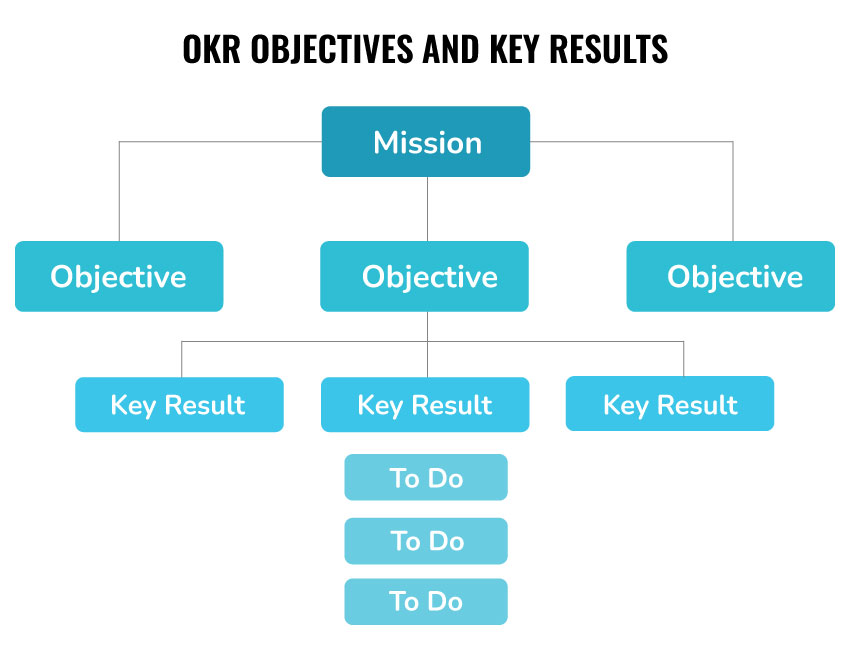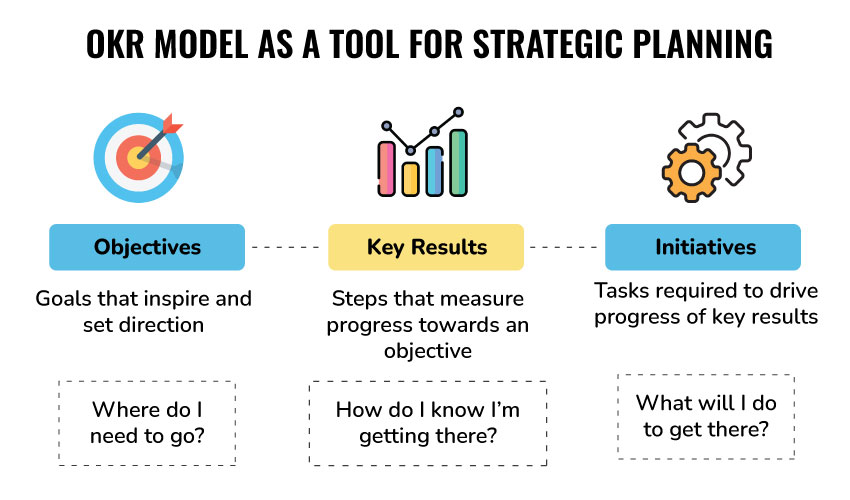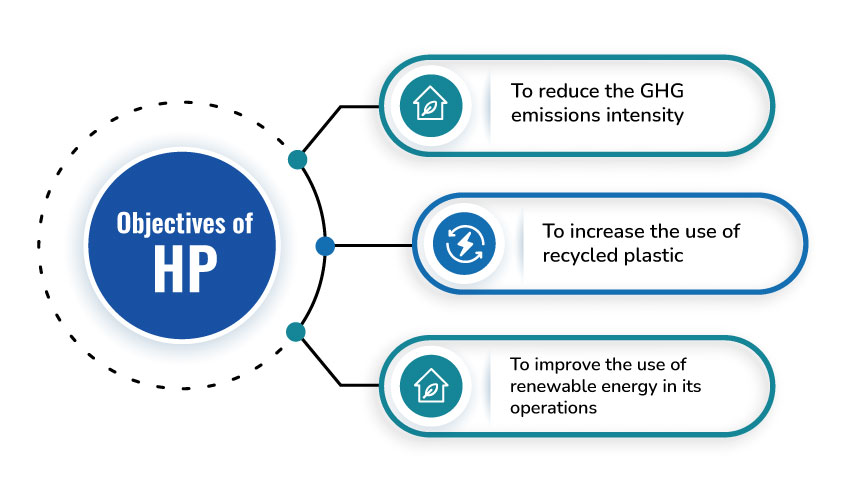Table of Content
OKRs (Objectives and Key Results)
Objectives and Key Results is a goal-setting framework given by Andrew Grove to define measurable goals and to track the business objectives. This model can be used by individuals, teams, and organizations for attaining various business objectives.
As the name suggests, the OKR Framework is a strategic model which can help to translate the broader organizational goals into measurable and achievable objectives. The use of this model helps to track the key results. The OKR Framework involves the identification of three to five attainable objectives in the business along with three to five results for each objective.
The need for the OKR Framework
The OKR Framework is a goal management model that is used by organizations to implement and execute strategies. The OKR Framework is also used to better focus on the organization’s objectives and results, increase transparency, support alignment, and organize employees to work towards the achievement of the business objectives.
This goal management tool also consists of the objectives which tell where the organization wants to go and key results that track the organization’s performance towards the business objectives. In addition, the use of the OKR Framework also helps the organization to define various initiatives to be taken. The initiatives involve the key tasks that can be undertaken to achieve the objectives and key results.
The OKR Framework also helps an organization to bridge the gap between the business strategies and their execution. The use of this model also includes various rules which then help the employees to prioritize, align and achieve the business objectives.
How to apply the OKR Framework?
To apply the OKR Framework, the first requirement is to identify the three to five measurable and attainable business objectives. The objectives can be set on the basis of the SMART Goals model which requires that the objectives should be specific, measurable, achievable, realistic, and time-bound.
The objectives are required to be defined by considering the 2 cadences i.e. annual and quarterly. The business objectives can be set on the basis of the mission and vision of the organization.
After defining the objectives, the organization also needs to define the Key Performance Results which include the steps that will measure the progress towards the set objectives. The key results should also be clearly defined, focused, and challenging. This includes the appropriate metrics to measure the business’s success. For measuring the business objectives, there should be 3-5 key results for the achievement of the business goals.

The results should also be measurable on a scale of 0 to 100 % as the measurable metrics can help to better track the progress towards the set objectives and identify the performance gaps.
On the basis of the key objectives and results, the initiatives to support the achievement of the business objectives can also be defined. The initiatives need to be specific, clearly defined, and within control.

OKR Framework real example
To have a better understanding of the OKR Framework, let us consider the Hewlett Packard Objectives and Key Results which include reducing GHG emissions, using recycled plastic, and improving the use of renewable energy in its operations. The OKR Framework can help to strategically plan the actions that can be taken to achieve the set objectives. The key results for various objectives will also help to measure the progress towards the achievement of various goals.
We all know that sustainability has gained huge importance and business firms are undertaking various measures to ensure environmental and social sustainability. However, have you ever studied the triple bottom line approach? The Triple bottom line approach is a business concept that requires the business organizations to measure their social and environmental impact in addition to their financial performance. Thus, we have considered the sustainability factor along with financial OKR while preparing the strategic plan for HP.
The key objective of HP is to reduce GHG emissions which is also validated by the Science-Based Targets initiatives. The list of the key objectives of HP is shown as follows-

You need to be mindful of the fact that setting up objectives does not result in higher performance outcomes. Every individual or organization needs to consider the metrics that can be used to track the business objectives. For each objective, there need to be at least 3 objectives. Thus, the following table is prepared to highlight the key metrics that can be used to measure HP’s progress towards its sustainable goals.
| Objectives | Key results |
|---|---|
| To reduce the GHG emissions intensity | Reduce GHG emissions intensity relating of the first-tier production suppliers by 10 % in 1 year |
| Reduce GHG emissions intensity relating to the product transportation by 5 % in 1 year | |
| Reduce GHG emissions intensity of HP product portfolio by 15 % in 1 year | |
| To reduce plastic consumption | Use 10 % of the post-consumer recycled content plastic in HP personal systems by 6 months |
| Reduce plastic pollution by 12 % by end of 6 months | |
| Eliminate single-use plastic packaging by 50 % by end of 1 year | |
| To improve the use of renewable energy in its operations | Use 10 % of the post-consumer recycled content plastic in HP personal systems by 6 months |
| Increase use of renewable electricity sources by 50 % in 6 months in HP operations | |
| Embrace solar power technologies in all manufacturing units of HP |
Now, on the basis of the organization’s objectives and key results, let us consider the initiatives that can be taken by HP to ensure environmental sustainability.
| Objectives | Key results | Initiatives |
|---|---|---|
| To reduce the GHG emissions intensity | Reduce GHG emissions intensity relating of the first-tier production suppliers by 10 % in 1 year |
|
| Run a regular performance report | ||
| Reduce GHG emissions intensity relating to the product transportation by 5 % in 1 year | ||
| To reduce plastic consumption | Use 10 % of the post-consumer recycled content plastic in HP personal systems by 6 months |
|
| Reduce plastic pollution by 12 % by end of 6 months | ||
| Eliminate single-use plastic packaging by 50 % by end of 1 year | ||
| To improve the use of renewable energy in its operations | Increase investment in renewable energy solutions by 20 % in 3 months |
|
| Increase use of renewable electricity sources by 50 % in 6 months in HP operations | ||
| Embrace solar power technologies in all manufacturing units of HP |